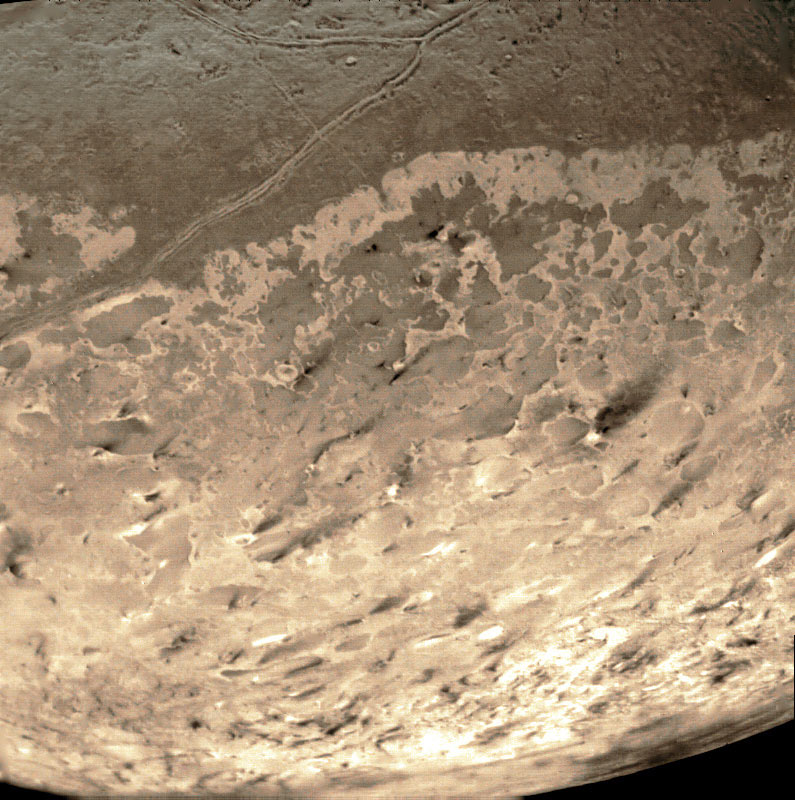Triton Hopper on:
[Wikipedia]
[Google]
[Amazon]
 ''Triton Hopper'' is a proposed NASA lander to
''Triton Hopper'' is a proposed NASA lander to
Exploring Neptune's Captured Kuiper Belt Object
a short NASA video at YouTube {{Triton Proposed NASA space probes Missions to Neptune Landers (spacecraft) Hopping spacecraft
 ''Triton Hopper'' is a proposed NASA lander to
''Triton Hopper'' is a proposed NASA lander to Triton
Triton commonly refers to:
* Triton (mythology), a Greek god
* Triton (moon), a satellite of Neptune
Triton may also refer to:
Biology
* Triton cockatoo, a parrot
* Triton (gastropod), a group of sea snails
* ''Triton'', a synonym of ''Triturus' ...
, the largest moon
The Moon is Earth's only natural satellite. It Orbit of the Moon, orbits around Earth at Lunar distance, an average distance of (; about 30 times Earth diameter, Earth's diameter). The Moon rotation, rotates, with a rotation period (lunar ...
of Neptune
Neptune is the eighth and farthest known planet from the Sun. It is the List of Solar System objects by size, fourth-largest planet in the Solar System by diameter, the third-most-massive planet, and the densest giant planet. It is 17 t ...
. The idea is to harvest the abundant nitrogen ice
Solid nitrogen is a number of solid forms of the element nitrogen, first observed in 1884. Solid nitrogen is mainly the subject of academic research, but low-temperature, low-pressure solid nitrogen is a substantial component of bodies in the out ...
on the surface of Triton and use it as propellant for multiple short flights and explore a variety of locations. The concept transitioned in March 2018 to Phase II to refine their designs and explore aspects of implementing the new technology.
History
Triton is the largest moon of Neptune. In 1989, ''Voyager 2
''Voyager 2'' is a space probe launched by NASA on August 20, 1977, as a part of the Voyager program. It was launched on a trajectory towards the gas giants (Jupiter and Saturn) and enabled further encounters with the ice giants (Uranus and ...
'' flew past the moon at a distance of 40,000 km, and discovered several cryovolcano
A cryovolcano (sometimes informally referred to as an ice volcano) is a type of volcano that erupts gases and volatile material such as liquid water, ammonia, and hydrocarbons. The erupted material is collectively referred to as ''cryolava'' ...
es on its surface. Triton is geologically active; its surface is young and has relatively few impact craters. It has a very thin atmosphere
An atmosphere () is a layer of gases that envelop an astronomical object, held in place by the gravity of the object. A planet retains an atmosphere when the gravity is great and the temperature of the atmosphere is low. A stellar atmosph ...
.
The ''Triton Hopper'' concept started Phase I in 2015, and it transitioned in March 2018 to Phase II, where the new technologies are being matured by NASA's Institute for Advanced Concepts ( NIAC).
Overview
The ''Triton Hopper'' concept proposes the use of a radioisotope rocket engine that would collect nitrogen ice on or below the surface, heat it under pressure and use it aspropellant
A propellant (or propellent) is a mass that is expelled or expanded in such a way as to create a thrust or another motive force in accordance with Newton's third law of motion, and "propel" a vehicle, projectile, or fluid payload. In vehicle ...
to explore Neptune's moon Triton. The largest technological challenge is to learn how to mine
Mine, mines, miners or mining may refer to:
Extraction or digging
*Miner, a person engaged in mining or digging
*Mining, extraction of mineral resources from the ground through a mine
Grammar
*Mine, a first-person English possessive pronoun
M ...
local surface nitrogen ice, and how to heat it for use as propellant. The rocket-powered hops are estimated to be up to 1 km high and 5 km long.
A rocket-powered vehicle, or "hopper", has several advantages due to the variety of terrain and a gravity
In physics, gravity (), also known as gravitation or a gravitational interaction, is a fundamental interaction, a mutual attraction between all massive particles. On Earth, gravity takes a slightly different meaning: the observed force b ...
of only 8% of that of Earth
Earth is the third planet from the Sun and the only astronomical object known to Planetary habitability, harbor life. This is enabled by Earth being an ocean world, the only one in the Solar System sustaining liquid surface water. Almost all ...
. Hemispheric traverses and atmospheric sampling are possible during hops.
While airborne, the craft could acquire images and videos during flight. While on the ground, it could photograph and analyze the chemistry and geology of the surface. It could potentially fly through geysers
A geyser (, ) is a spring with an intermittent water discharge ejected turbulently and accompanied by steam. The formation of geysers is fairly rare and is caused by particular hydrogeological conditions that exist only in a few places on Ea ...
on Triton's surface to analyze the material ejected from them.
See also
* Comet Hopper *Europa Lander (NASA)
The Europa Lander is an astrobiology mission concept by NASA to send a lander to Europa, an icy moon of Jupiter. If funded and developed as a large strategic science mission, it would be launched in 2027 to complement the studies by the ...
* ''Trident'', a flyby proposal to Triton
* Pluto Hop, Skip, and Jump, a very similar proposal
References
External links
Exploring Neptune's Captured Kuiper Belt Object
a short NASA video at YouTube {{Triton Proposed NASA space probes Missions to Neptune Landers (spacecraft) Hopping spacecraft